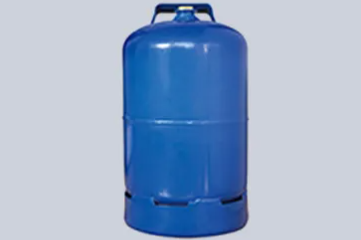The Essential Guide to LPG Cylinder Safety: Tips and Best Practices
Liquefied Petroleum Gas (LPG) cylinders are widely used for various applications, including cooking, heating, and powering appliances. While LPG is a convenient and efficient energy source, it's essential to prioritize safety when handling, storing, and using LPG cylinders. This guide aims to provide valuable tips and best practices to ensure LPG cylinder safety, minimizing the risk of accidents and promoting a secure environment for users.

Cylinder Inspection:
Regularly inspecting LPG cylinders is crucial for identifying potential hazards. Before installation or usage, examine the cylinder for any signs of damage, such as dents, rust, or leakage. If you notice any abnormalities, do not use the cylinder and seek professional assistance.
Proper Storage:
Store LPG cylinders in a well-ventilated area away from heat sources, combustible materials, and direct sunlight. Keep them in an upright position and secure them with a sturdy cylinder stand or bracket to prevent toppling. Adequate spacing between cylinders is necessary to allow air circulation and minimize the risk of accidental collisions.
Handling and Transportation:
When moving or transporting LPG cylinders, always exercise caution. Ensure the cylinder valve is tightly closed and capped before lifting or carrying it. Avoid dragging or rolling cylinders, as this can cause damage to the valve or cylinder body. Additionally, never transport LPG cylinders in the passenger compartment of a vehicle; instead, securely place them in a well-ventilated area of the vehicle's trunk or an upright position in a dedicated cylinder carrier.
Valve Safety:
Handle LPG cylinder valves with care. Avoid excessive force or tampering that could lead to valve damage or gas leakage. Never use a damaged or faulty valve and promptly report any issues to the relevant authorities or gas supplier. Familiarize yourself with the valve operations, such as opening, closing, and emergency shut-off procedures.
Gas Leakage Detection:
Learn how to identify gas leakage to ensure a prompt response. Apply a solution of soapy water to the cylinder connections, valves, and regulator to check for the formation of bubbles, which indicate a leak. If a leak is detected, immediately turn off the cylinder valve, ventilate the area, and seek professional assistance.
Fire Safety:
LPG is highly flammable, so fire safety precautions are of utmost importance. Keep flammable materials away from LPG cylinders and always have a fire extinguisher nearby. Educate yourself and household members on fire safety protocols, including evacuation procedures and the correct usage of fire extinguishers.
Regular Maintenance:
Engage in regular maintenance of LPG cylinders and related equipment. Follow manufacturer guidelines for inspections, servicing, and replacement of components. Ensure that hoses, regulators, and other connecting parts are in good condition and free from damage or wear.
Proper Ventilation:
Ensure proper ventilation in areas where LPG cylinders are used or stored. Adequate airflow prevents the accumulation of gas and reduces the risk of combustion or asphyxiation.
Education and Training:
Educate yourself and household members on LPG cylinder safety practices. Understand the potential hazards, emergency procedures, and the correct usage of LPG appliances. Consider attending safety training programs or workshops provided by local authorities or gas suppliers.
Professional Assistance:
When in doubt or faced with complex issues related to LPG cylinder safety, seek professional assistance. Gas suppliers, technicians, and safety experts can provide guidance, conduct inspections, and address any concerns you may have.
Conclusion:
LPG Gas cylinder safety is a responsibility that should be taken seriously by users. By adhering to these tips and best practices, we can minimize the risk of accidents, gas leakage, and fires associated with LPG cylinders. Prioritizing regular inspectionand maintenance, proper storage, safe handling and transportation, valve safety, gas leakage detection, fire safety measures, ventilation, education, and seeking professional assistance when needed, will contribute to a secure environment for LPG cylinder usage. Remember, safety should always be the top priority when dealing with LPG cylinders, ensuring peace of mind and a safe experience for everyone involved.



